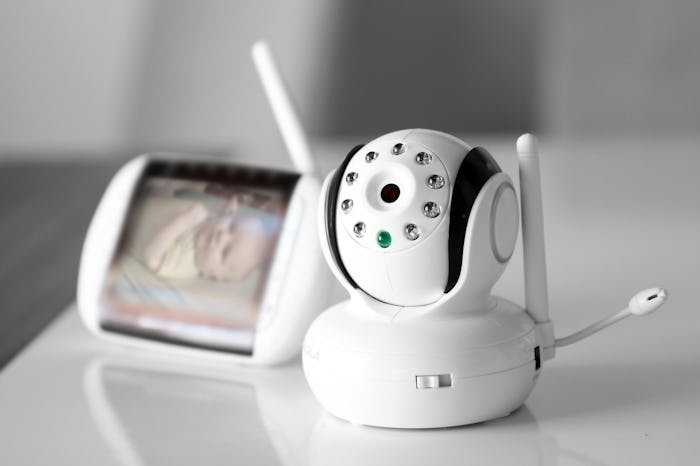Life

How To Find A Safe Baby Monitor, Because The Horror Stories Are Real
There are aisles upon aisles of useful baby products on the market, making parents' lives more convenient. Every new invention, improvement, and upgrade allows moms and dads to feel more in control of family life and stay tapped into the latest trends in technology. With so many advantages to staying current on products, it's easy to miss the downside to items that aim to simplify daily activities. But investing the time into researching how to find a safe baby monitor can be one of the smartest efforts made by a parent on her baby's behalf.
For years, parents have relied on baby monitors to keep their little ones at a virtual arm's length. Being able to listen in on your baby as she sleeps in another room provides peace of mind and the freedom to move around the house while still keeping tabs on your bambino. But as the baby monitor has evolved to wireless versions, the health hazard of having one in your baby's room has increased. According to the National Association of Children and Safe Technology, "Wireless Baby Monitor radiation fills a nursery and surrounding rooms because it passes through the walls. Babies will absorb radiation from the monitor all night long."
With so many devices emitting radiation, eliminating as many as possible can help to keep the whole house more healthy. According to Healthy Children, Healthy World, a website from the Environmental Work Group, prolonged exposure to radiation can cause many health concerns, particularly in the brain. For infants and babies, this risk increases due to the fact that a little one's bone marrow absorbs more radiation than that of an adult. Which means finding a safe alternative to a wireless baby monitor can help protect your child from unwanted harmful effects.
To keep an ear out for baby without the worry of overexposure to high-frequency radiation, opt for an analog monitor, as recommended by the website Home Biology, which specializes in advising consumers on electromagnetic radiation and health solutions. Analog monitors broadcast in frequencies of 40-900MHz which means lower radiation emissions than the digital models. Since these types don't have as many bells and whistles as wireless versions, there is the added bonus of a lower price point.